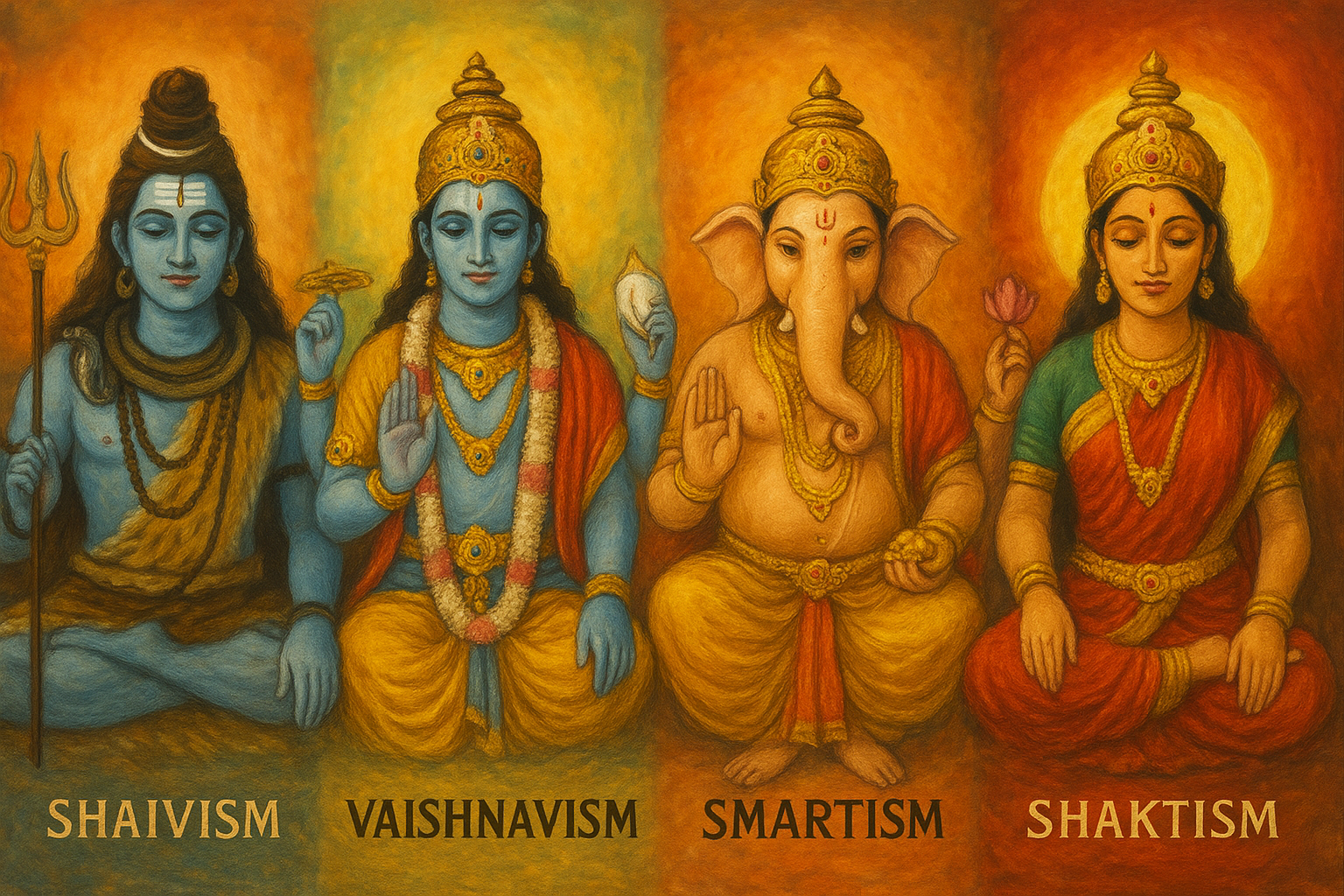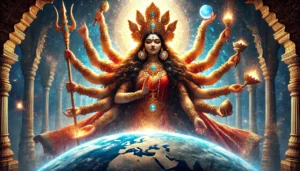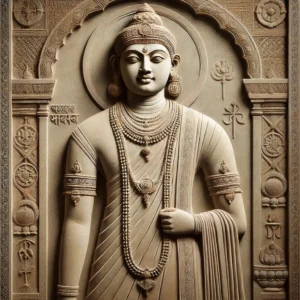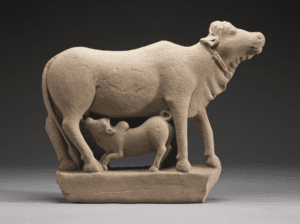Hinduism is a vast and diverse religion, with various paths to spiritual realization. Among the many ways Hindus express their devotion, four primary sects stand out: Shaivism, Vaishnavism, Smartism, and Shaktism. Each of these sects places emphasis on a different aspect or deity of the Hindu pantheon, yet they coexist peacefully, offering unique yet complementary ways of understanding the divine. This article provides a brief overview of these sects, highlighting their key concepts, differences, and how they often converge within the larger framework of Hinduism.

1. Shaivism: The Followers of Shiva
Main Deity: Lord Shiva, the supreme being in Shaivism.
Shaivism is one of the oldest sects within Hinduism, with Lord Shiva as the central figure. In this tradition, Shiva is regarded as both the creator and the destroyer of the universe, embodying the cycle of creation, preservation, and dissolution. His role is pivotal in maintaining cosmic balance.
Key Concepts
- Asceticism: Shiva is often depicted as an ascetic, residing in the Himalayas and immersed in deep meditation. Followers of Shaivism emulate this aspect by practicing austerity, self-discipline, and meditation.
- Moksha: The ultimate goal in Shaivism is achieving moksha (liberation from the cycle of rebirth), which can be attained through devotion, meditation, and Shiva’s grace.
Shaivism is not a monolithic tradition but rather comprises several sub-sects, including Kashmiri Shaivism and Shaiva Siddhanta, each with varying interpretations of Shiva’s supremacy. Despite these differences, Shaivites share a deep reverence for Shiva as the embodiment of both ascetic detachment and dynamic power.
Regional Influence
Shaivism has a particularly strong following in southern India, particularly in the state of Tamil Nadu, as well as in Nepal and parts of northern India, such as Kashmir.
2. Vaishnavism: The Followers of Vishnu
Main Deity: Lord Vishnu, and his avatars, particularly Rama and Krishna.
Vaishnavism revolves around the worship of Lord Vishnu, regarded as the preserver and protector of the universe. Vaishnavites believe that Vishnu incarnates in various forms (avatars) to restore cosmic order whenever it is threatened by evil. Two of his most well-known avatars are Rama, the prince of Ayodhya, and Krishna, the divine statesman and charioteer of the Mahabharata.
Key Concepts
- Bhakti: Devotion or Bhakti is central to Vaishnavism. Followers express their love for Vishnu through rituals, prayers, chanting of his names, and participation in festivals like Diwali and Janmashtami.
- Avatar Theory: Vishnu is believed to incarnate on Earth in various forms, particularly during times of moral and cosmic crisis. His avatars include Matsya (fish), Kurma (tortoise), Rama, and Krishna, each with a distinct purpose to restore dharma (righteousness).
- Moksha through Surrender: In Vaishnavism, salvation is achieved through total surrender to Vishnu, allowing his grace to liberate the soul from the cycle of rebirth.
Vaishnavism has been influenced by saints like Ramanuja, Madhva, and Chaitanya Mahaprabhu, who established various schools of thought within the sect, all focused on devotion to Vishnu and his avatars.
Regional Influence
Vaishnavism has a wide following throughout India, particularly in the northern states like Uttar Pradesh and Gujarat, as well as in the south. Major pilgrimage sites like Tirupati, Dwarka, and Mathura are dedicated to Vishnu’s avatars.
3. Smartism: The Followers of Multiple Deities
Main Deities: Shiva, Vishnu, Shakti (Devi), Ganesha, and Surya (the Sun god).
Smartism represents a more philosophical and inclusive approach within Hinduism. Unlike the other sects, which focus on a specific deity, Smartism teaches that the ultimate reality is Brahman, the formless, absolute principle that transcends all gods. Smartas, therefore, have the flexibility to worship any of the major Hindu deities, viewing them as different manifestations of the same ultimate reality.
Key Concepts
- Panchayatana Puja: Smartas often engage in the practice of worshiping five deities—Shiva, Vishnu, Shakti, Ganesha, and Surya—seeing them as equal representations of Brahman.
- Advaita Vedanta: Most Smartas follow the Advaita Vedanta philosophy, which teaches that the soul (Atman) and Brahman are one and the same, and that realization of this unity leads to liberation.
- Liberal Approach: Smartism is known for its flexibility and inclusivity, allowing followers to choose which deity they prefer to worship. The emphasis is less on the personal form of God and more on the underlying unity behind all forms.
Regional Influence
Smartism is predominantly followed in southern India, particularly in Tamil Nadu and Karnataka. It was systematized by Adi Shankaracharya, the 8th-century philosopher, who emphasized the non-dualistic (Advaita) interpretation of the scriptures.
4. Shaktism: The Followers of Shakti
Main Deity: Shakti or Devi, the Divine Mother in her various forms (Durga, Kali, Parvati).
Shaktism places the Divine Feminine or Shakti at the center of worship. Shakti represents the cosmic energy that powers the universe, and she is worshiped in various forms, from the fierce and destructive Kali to the nurturing and protective Parvati.
Key Concepts
- Worship of the Goddess: Shaktas believe that the supreme reality is feminine, with Shakti embodying the dynamic energy that creates and sustains the universe. Devotees often worship her in temples, perform elaborate rituals, and celebrate festivals like Durga Puja and Navaratri.
- Tantra: Shaktism has deep connections with Tantra, a set of esoteric practices that seek to harness divine energy for spiritual liberation. Rituals, mantras, and meditations focusing on the feminine principle are common.
- Moksha through Union with Shakti: In Shaktism, liberation is achieved through union with the Divine Mother. Shakti is seen as both immanent (within the world) and transcendent (beyond the world).
Regional Influence
Shaktism is most prevalent in eastern India, particularly in states like West Bengal, Assam, and Odisha. Major festivals like Durga Puja and Kali Puja are celebrated with great enthusiasm in these regions.
Convergence and Coexistence of Sects in Hinduism
While Shaivism, Vaishnavism, Smartism, and Shaktism emphasize different deities, there is significant overlap and convergence among these traditions. For instance, it is common for Hindus to visit temples dedicated to both Shiva and Vishnu, and many households practice a form of Smartism by honoring multiple deities in their daily worship.
Key points of convergence include:
- Belief in Brahman: At the highest philosophical level, all these sects acknowledge Brahman, the ultimate, formless reality that pervades the universe.
- Moksha: Each sect teaches that the goal of life is to attain moksha, or liberation from the cycle of birth and death, though the paths to this realization may differ.
- Inter-sect Practice: Many Hindus do not exclusively follow one sect. A person may worship Vishnu and Shiva while participating in Shakti rituals, highlighting the fluid nature of Hindu spirituality.
This coexistence and blending of sects within Hinduism create a unique religious landscape where followers can maintain devotion to a personal deity while respecting the validity of other paths. The diversity within Hinduism allows it to adapt to individual preferences while upholding shared spiritual goals, fostering a harmonious religious environment.
Difference Between Western Sects and Sects or Traditions in Sanatan Dharma: In Sanatan Dharma (Hinduism), the traditions or sects—such as Shaivism, Vaishnavism, Smartism, and Shaktism—are not rigid or exclusive divisions. They represent diverse paths of worship and philosophy that coexist harmoniously, with many Hindus freely blending practices from multiple sects. Unlike sects in Western or Middle Eastern religions, which often have clear doctrinal boundaries and may result in separation of communities, Hindu sects share a belief in the same overarching truths (like Brahman and Moksha) and allow individuals to pursue different paths without conflict. This inclusivity and fluidity are central to Hindu pluralism.
Conclusion
Shaivism, Vaishnavism, Smartism, and Shaktism represent distinct yet interconnected paths in Hinduism, each providing a unique approach to understanding the divine. Whether through devotion to Shiva, Vishnu, Shakti, or multiple deities, these sects reflect the rich plurality of Hindu thought, allowing followers to explore different facets of the divine while respecting the unity underlying all creation.






